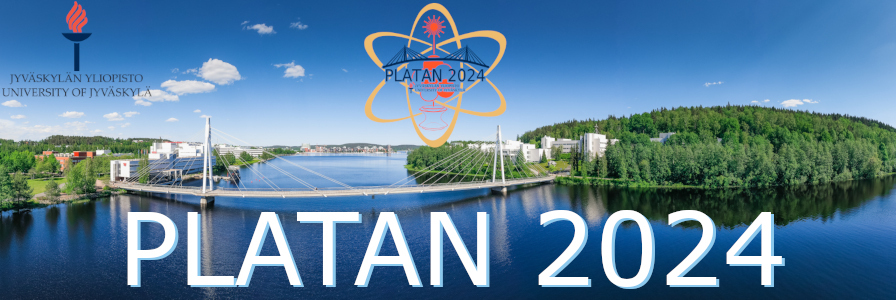Speaker
Description
The ISOLDE facility at CERN provides radioactive ion beams of nuclides produced in reactions between 1.4-GeV protons and thick targets using the Isotope Separation On-Line (ISOL) technique. The formation of volatile molecules has been used as a method to deliver beams of otherwise non-volatile release-limited elements [1-5]. Molecular sideband extraction is also used to improve beam purity. The availability of molecular beams additionally provides opportunities for fundamental physics studies [6-11].
We present our work on molecular ion beam production at CERN-ISOLDE using actinide targets and Forced Electron Beam Induced Arc Discharge (FEBIAD)-type ion sources [12]. Beam composition studies are presented using: the ISOLTRAP Multi-Reflection Time-of-Flight Mass Spectrometer (MR-ToF MS) [13], online γ-ray spectroscopy at the ISOLDE tape station [14,15], and off-line $\alpha$- and γ-ray spectrometry of ion-implanted samples.
References
[1] R. Eder et al., NIMB 62, 535 (1992)
[2] R. Kirchner, NIMB 126, 135 (1997)
[3] H. Frånberg et al., Rev. Sci. Inst. 77, 03A708 (2006)
[4] J. Ballof et al., Eur. Phys. J. A 55, 65 (2019)
[5] U. Köster et al., Eur. Phys. J. Special Topics 150, 293 (2007)
[6] G. Arrowsmith-Kron et al., arXiv, DOI 10.48550/arXiv.2302.02165 (2023)
[7] T. A. Isaev et al, Phys. Rev. A, 82, 052521 (2010)
[8] T. A. Isaev et al., arXiv, DOI 10.48550/arXiv.1310.1511 (2013)
[9] M. Safronova et al., Rev. Mod. Phys. 90, 025008 (2018)
[10] N. Hutzler et al., arXiv, DOI 10.48550/ARXIV.2010.08709 (2020)
[11] R. Garcia-Ruiz et al., Nature 581, 396 (2020)
[12] L. Penescu et al., Rev. Sci. Inst. 81, 02A906 (2010)
[13] R. N. Wolf et al., Int. J. Mass Spec. 123, 349 (2013)
[14] S. Stegemann et al., NIMB. Conf. Proc. EMIS XIX (2022)
[15] R. Catherall et al., J. Phys. G : Nucl. Part. Phys., 44, 094002 (2017)

